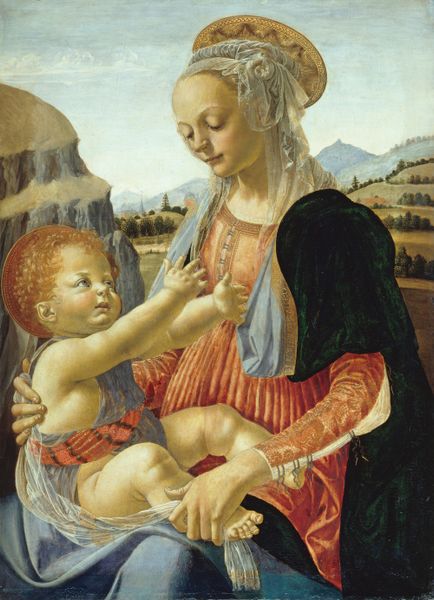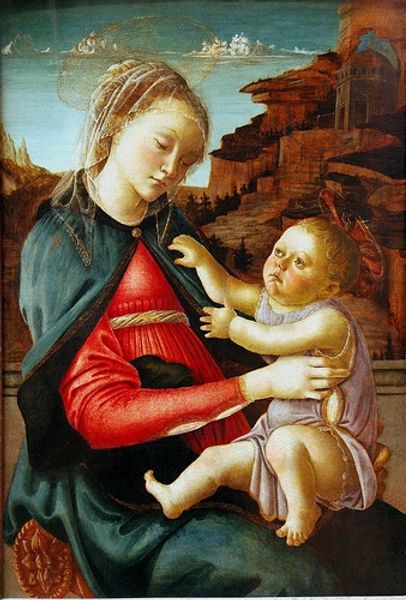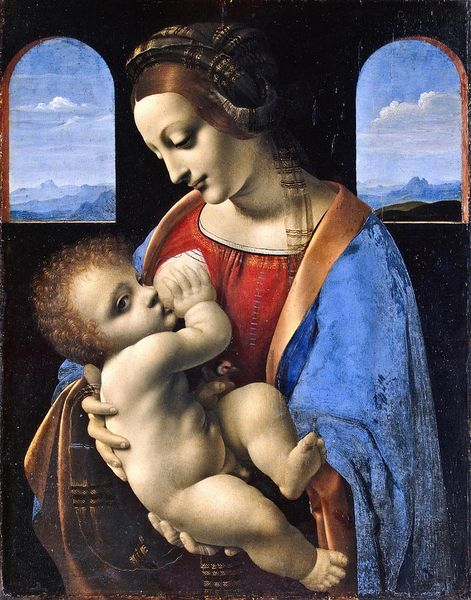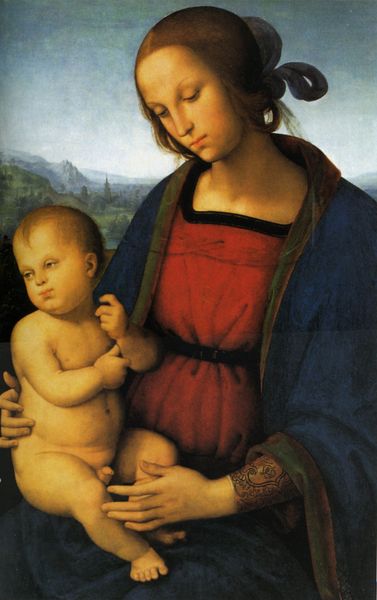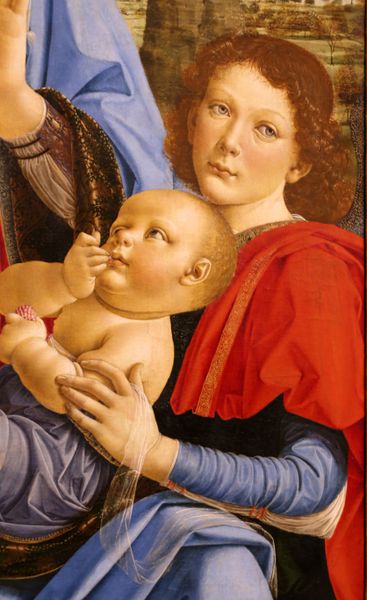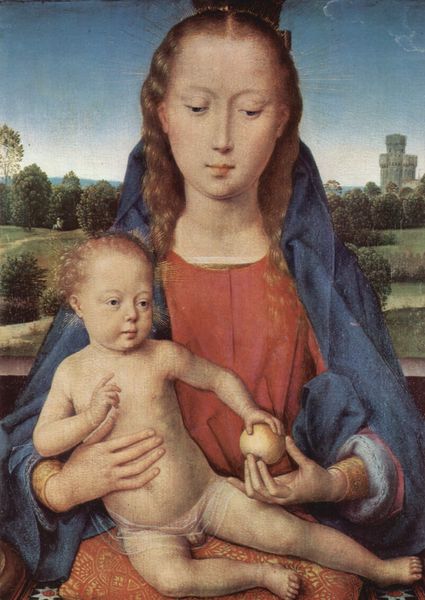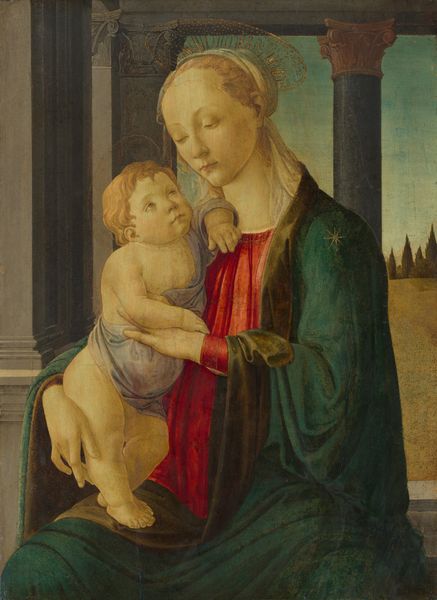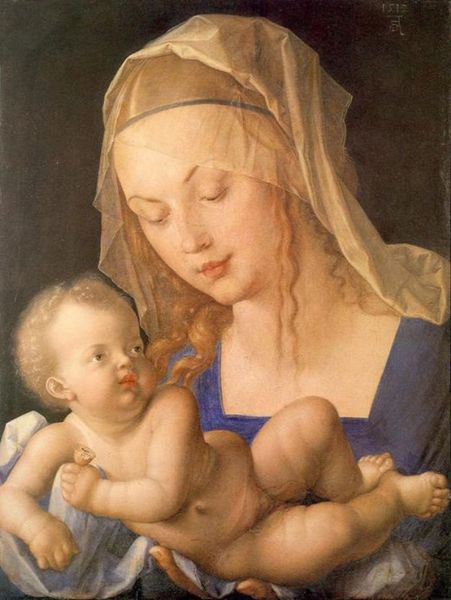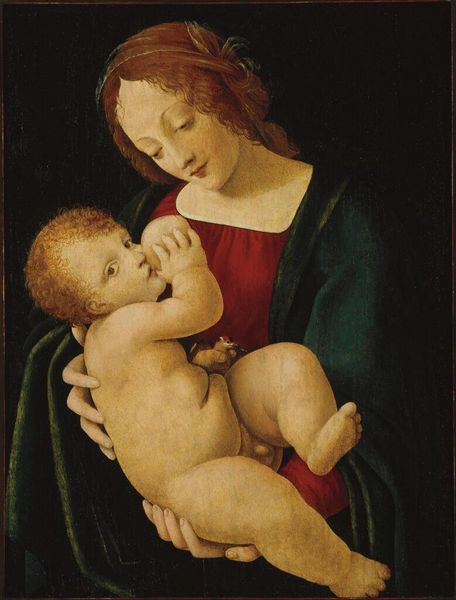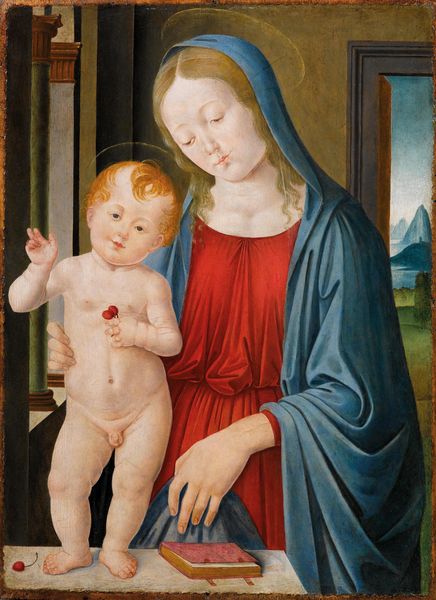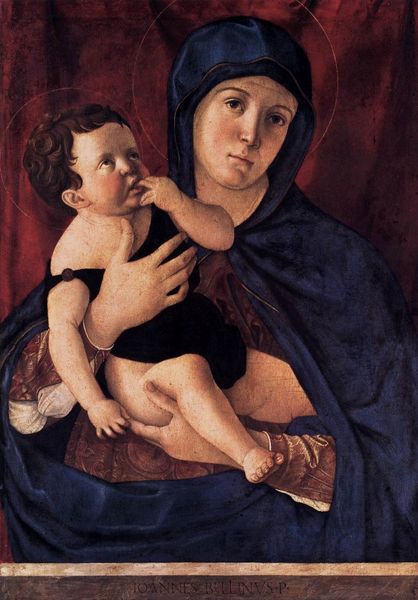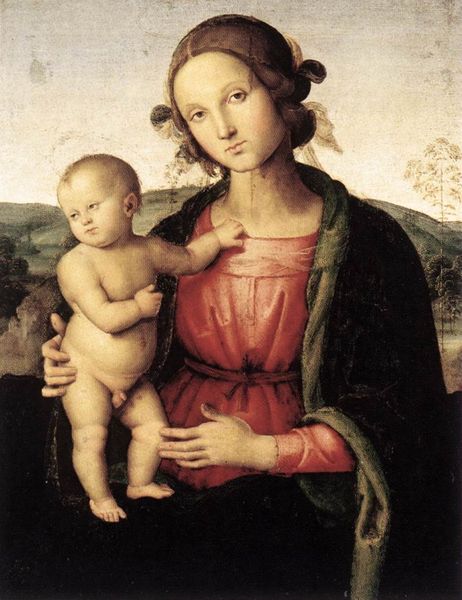
painting, oil-paint
#
portrait
#
painting
#
oil-paint
#
11_renaissance
#
oil painting
#
child
#
history-painting
#
italian-renaissance
#
portrait art
#
angel
Copyright: Public domain
Curator: Looking at this tender portrait, one of the earlier works in this gallery, we see "Madonna and Child", presented in oil paint and attributed to Andrea del Verrocchio. What are your initial thoughts? Editor: I’m struck by its simultaneous serenity and almost unsettling vulnerability. The child, reaching out, has an air of precarity about him. It reminds me of the debates about reproductive rights and bodily autonomy still raging today. Curator: An intriguing reading! Contextually, works like these were vital components of the Church's public imagery during the Italian Renaissance. They served to reinforce social norms and ideals of motherhood within the existing power structures. Editor: Exactly! Consider also that images of the Madonna were pervasive – almost inescapable for women in that era. It dictated not only their role in society, but set impossible standards of saintly motherhood. Does she reflect true lived experience? I don’t think so. Curator: Of course, the representation wasn't necessarily about depicting reality as such, but creating an idealized symbol of piety and divine grace. It solidified cultural values that perpetuated through institutions, guiding behaviors, controlling personal identity, all of this sanctioned by powerful religious patrons. Editor: I see that. And while the artistry itself might be celebrated, we need to recognize the ideological weight it carried. Who commissioned this piece? What social messages were embedded into the iconography and accessible presentation, which often sidelined those without means or recognition. Curator: The patron would likely be a wealthy family wanting to showcase their devoutness, thus climbing a social ladder with cultural and visual expressions of values accepted at the time. By supporting the Church through these kinds of commissions, families solidified not only religious, but also political alliances. Editor: All those aspects shaped our understanding of this artwork. Even today. It’s crucial to interrogate the original purposes of visual expression rather than blindly praising mere craftsmanship. Curator: Absolutely, it provides a comprehensive and critical view of the forces influencing Verrocchio’s composition and helps question visual vocabulary with relevant connections today. Editor: Agreed. It brings art history and current social movements closer together.
Comments
No comments
Be the first to comment and join the conversation on the ultimate creative platform.
